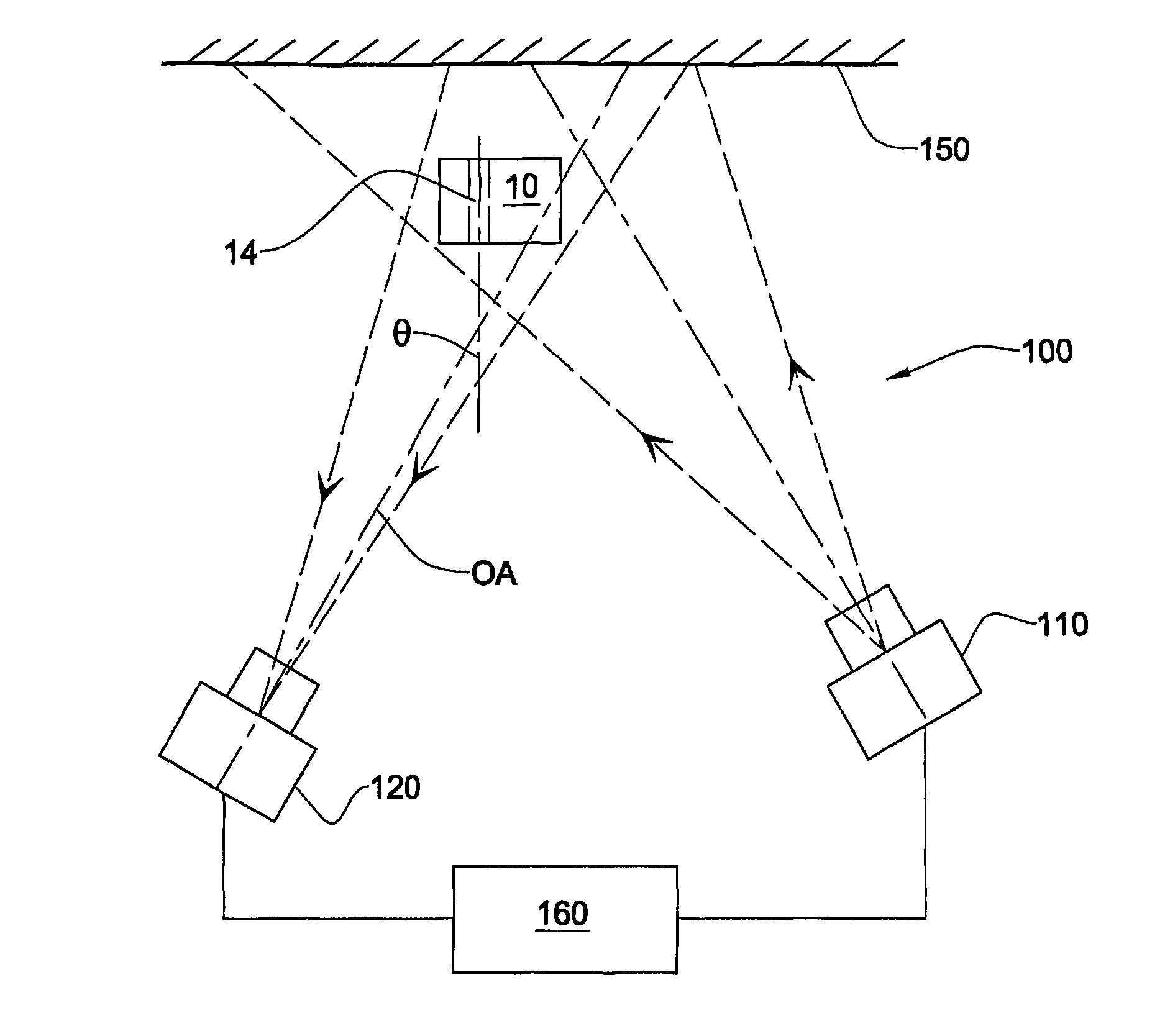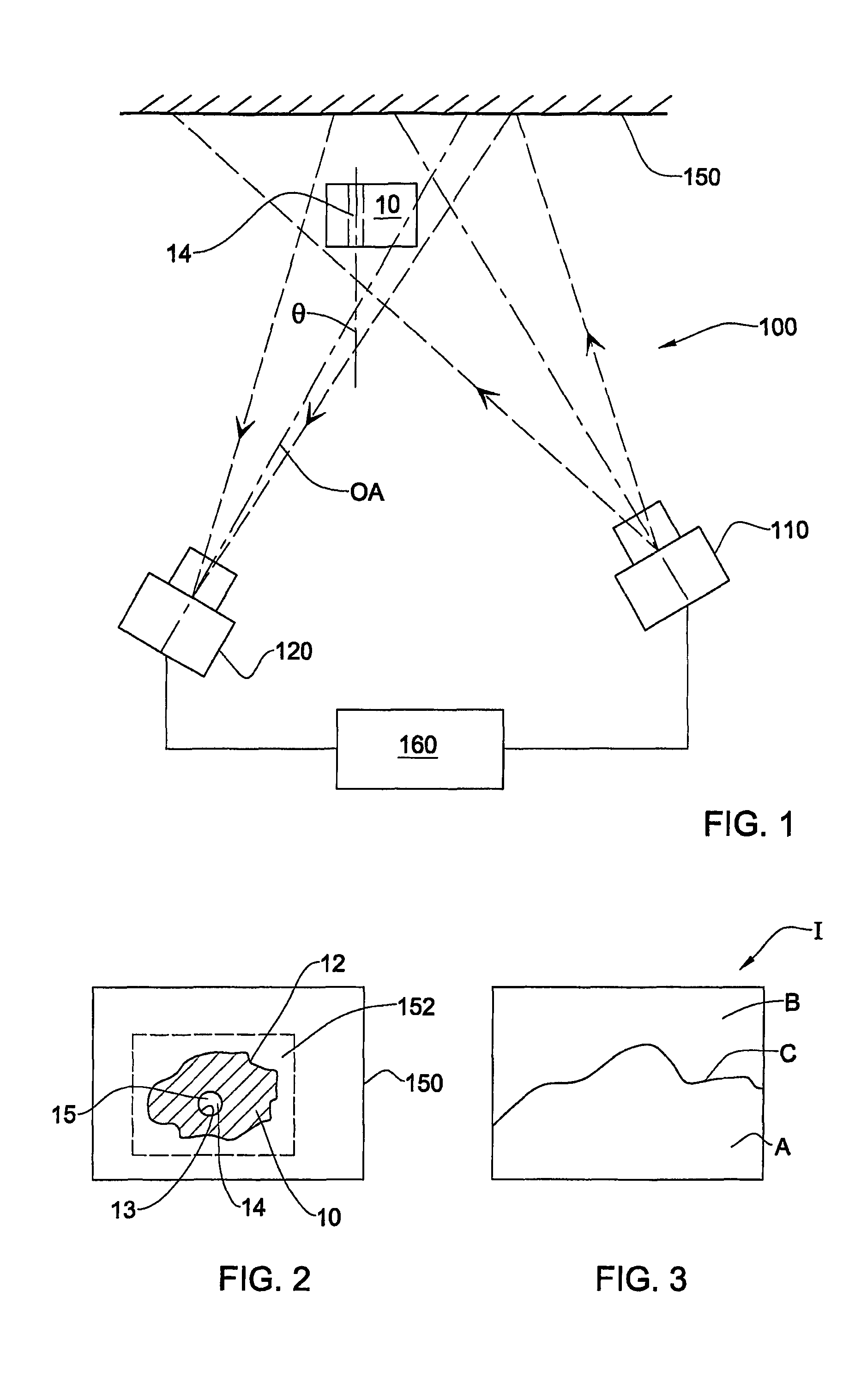Method and system for optical edge measurement
a technology of optical edge and optical edge, applied in image data processing, instruments, image enhancement, etc., can solve the problems of affecting the image acquisition system, affecting the image quality of the image, so as to achieve the effect of high reflection gain, low illumination power, and high signal in the imag
- Summary
- Abstract
- Description
- Claims
- Application Information
AI Technical Summary
Benefits of technology
Problems solved by technology
Method used
Image
Examples
first embodiment
[0047]A system according to the invention is illustrated in FIG. 1. The system, generally designated with the numeral 100, comprises at least one illumination source 110, a light reflecting medium 150, and at least one optical image capturing device 120.
[0048]An object 10 to be imaged, typically comprising surfaces and edges 12 of interest, is placed in front of the medium 150, and arranged such that it is located between the medium 150 and the illumination source 110, and also between medium 150 and the image capturing device 120. In particular, the illumination source 110 is spatially arranged with respect to the object 10 and medium 150, such that, at least during operation of the system 100, the object 10, or at least a portion of the surface thereof comprising edges 12, and a part 152 of the medium 150 surrounding the edges 12 are illuminated by the source 110. While edges 12 are external edges of the object 10, the present invention also relates to internal edges, for example ...
second embodiment
[0096]the invention generally provides more accurate results when the edge being investigated is fully visible from the viewing axis of all the image capturing devices.
[0097]In this embodiment of the invention, the two images in each set of images are captured as images, substantially simultaneously, either by using two cameras or any other suitable image capturing devices 220A, 220B. In other variations of this embodiment, a single camera or other suitable image capturing device may be used, and moved between two positions relative to the object, the positions being similar to those occupied by devices 220A, 220B in FIG. 6, for example. In such variations, the precise position of the single image capturing device is preferably accurately reproduced for each set of images taken. Alternatively, there are some methods, for example the bundle adjustment method used in photogrammetry, in which the 3D location of the fiducial or datum points and camera positions and locations are calcula...
PUM
 Login to View More
Login to View More Abstract
Description
Claims
Application Information
 Login to View More
Login to View More - R&D
- Intellectual Property
- Life Sciences
- Materials
- Tech Scout
- Unparalleled Data Quality
- Higher Quality Content
- 60% Fewer Hallucinations
Browse by: Latest US Patents, China's latest patents, Technical Efficacy Thesaurus, Application Domain, Technology Topic, Popular Technical Reports.
© 2025 PatSnap. All rights reserved.Legal|Privacy policy|Modern Slavery Act Transparency Statement|Sitemap|About US| Contact US: help@patsnap.com



